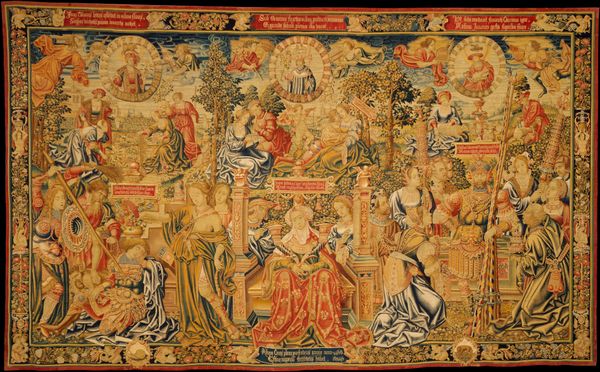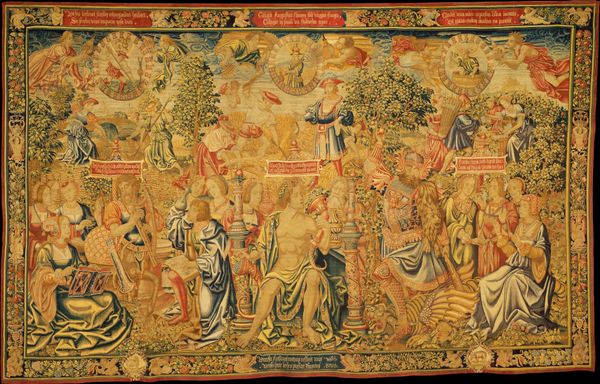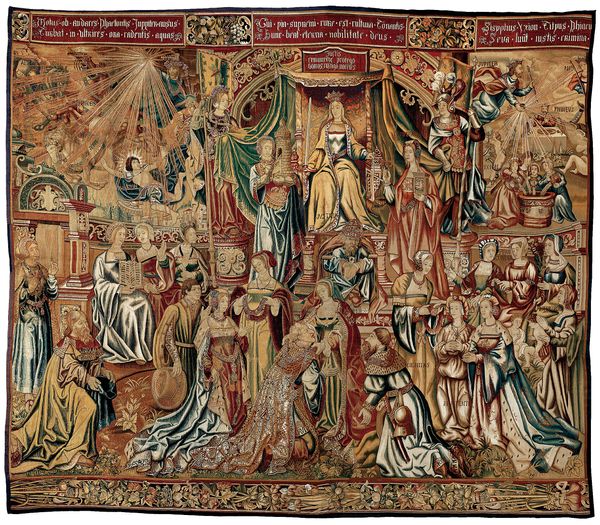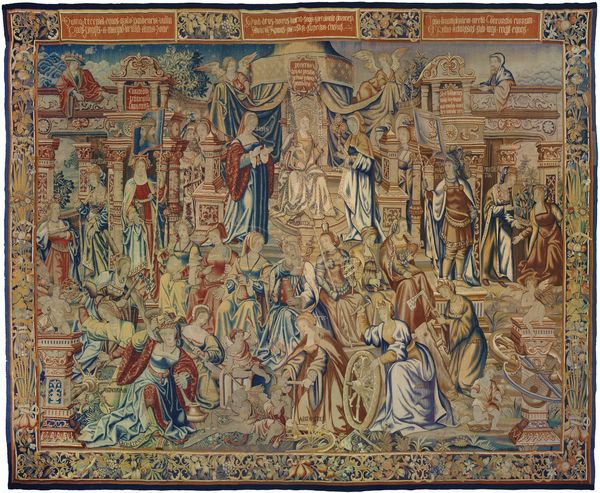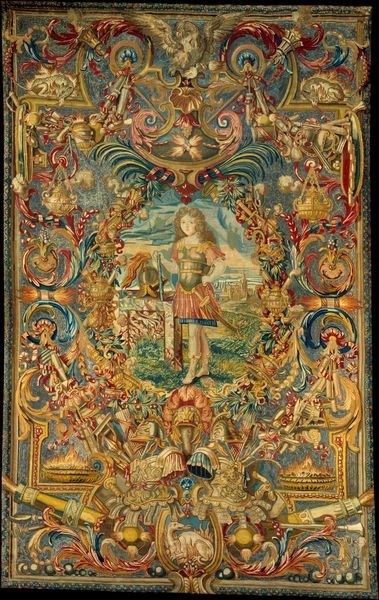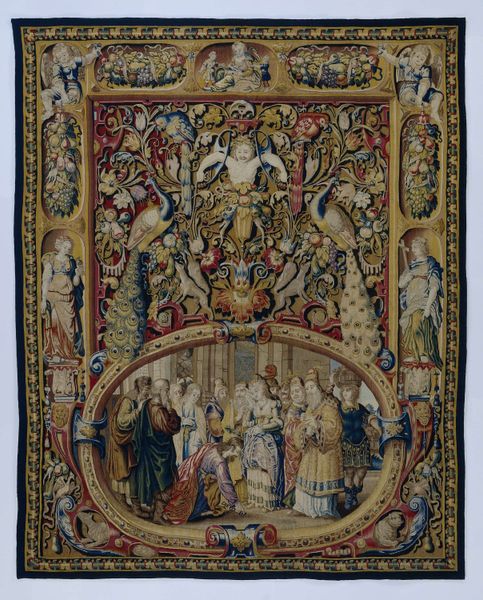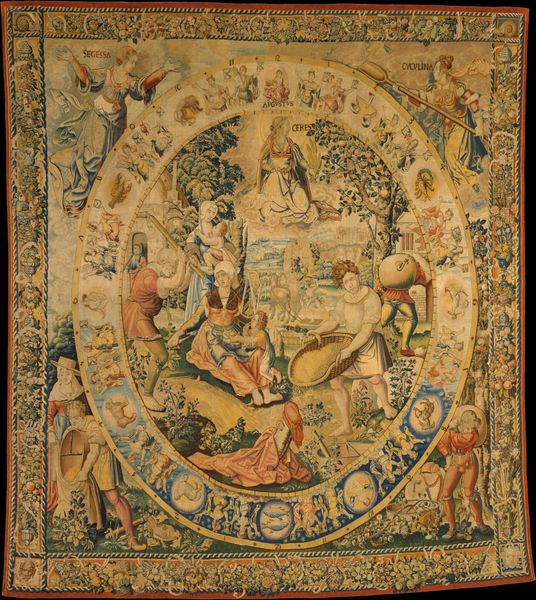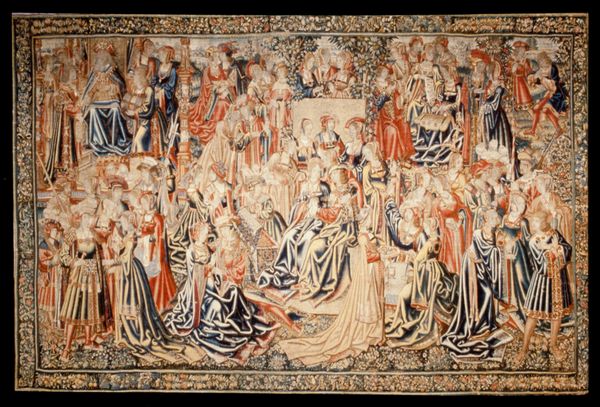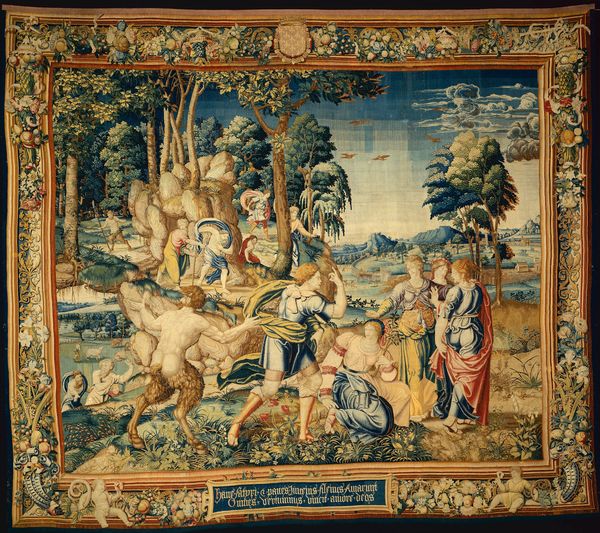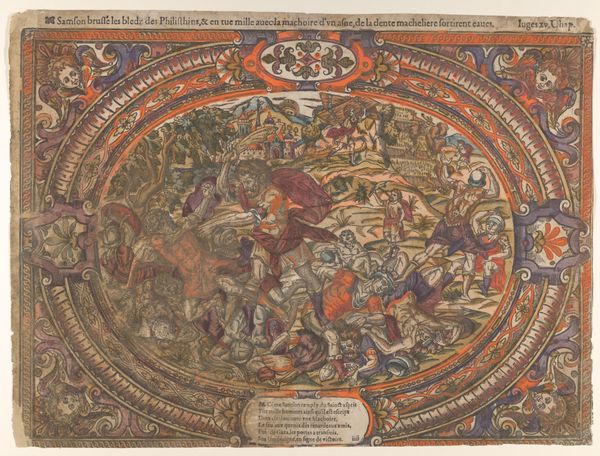
The Twelve Ages of a Man: The First Three Ages (Birth-18), or Spring 1510 - 1520
0:00
0:00
weaving, textile, sculpture
#
narrative-art
#
weaving
#
textile
#
figuration
#
11_renaissance
#
sculpture
#
history-painting
#
northern-renaissance
#
decorative-art
Dimensions: H. 163 x W. 284 inches (414 x 721.4 cm)
Copyright: Public Domain
This tapestry, "The First Three Ages," was made around 1535, probably in Brussels, and designed by Bernard van Orley. It's woven from wool and silk, a combination lending it both durability and luster. The image shows the stages of life: infancy, childhood, and adolescence, each meticulously rendered in thread. Tapestry production in the 16th century was a major industry, a complex interplay of design and labor. First, the cartoon or design, would be made by an artist like van Orley. Then, highly skilled weavers would translate this into textile, using looms to interlace the colored threads, working for months, even years, on a single piece. This was collaborative work, but the design was paramount. The tapestries were luxury goods, intended for wealthy patrons to hang in their homes, as displays of status and taste. Considering the materials and making of this tapestry provides insights into economics, skill, and the social world of the Renaissance. It challenges us to consider the hierarchy of design and making and how they are valued.
Comments
No comments
Be the first to comment and join the conversation on the ultimate creative platform.
